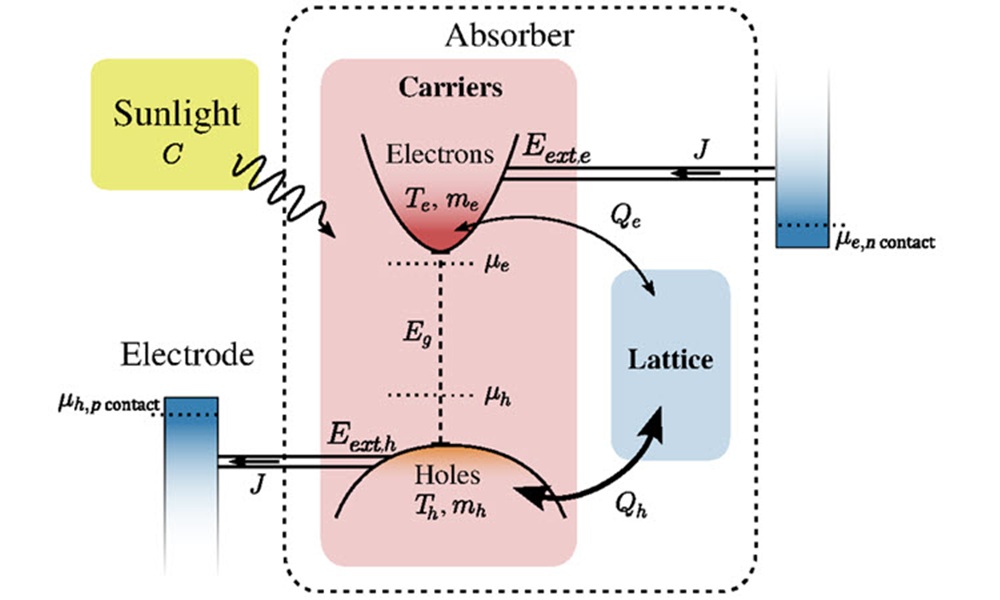
For decades, scientists have searched for ways to push solar energy conversion beyond current limits. One promising avenue is the use of hot-carrier solar cells (HCSCs), next-generation devices that capture excess energy from sunlight before it’s lost as heat. These advanced cells could, in theory, achieve efficiencies as high as 86 percent, well above the ~33 percent limit of traditional solar panels. Yet, turning that potential into reality has required overcoming numerous technical challenges, particularly related to how the charge carriers—electrons and holes—behave inside the material.
A research team from France recently revisited a long-standing assumption in solar cell modeling: that the electrons and holes inside the cell always share the same temperature. In reality, that may not be true. In practice, this is often not the case—especially in certain compound semiconductors made from elements like indium (In), gallium (Ga), arsenic (As), and phosphorus (P). These materials—known as InGaAsP—are widely used in high-performance optoelectronic devices, such as laser diodes, fiber-optic communication systems, and advanced solar cells, because they can be engineered to absorb and emit specific wavelengths of light very efficiently. However, under strong sunlight, they can also create conditions where electrons become significantly hotter than holes.
As reported in the Journal of Photonics for Energy (JPE), the researchers developed a new model of HCSC that allows different temperatures between electrons and holes. Their analysis showed that even when these temperatures are not equal, the cell still performs efficiently—as long as the overall or “effective” temperature remains controlled. In fact, a modest temperature gap (with hotter electrons) led to a slight increase in efficiency—about one to two percentage points—primarily due to a better fill factor, a key metric of solar cell performance.
Crucially, the study underscores the robustness of HCSCs: they continue to operate effectively even under non-ideal, imbalanced temperature conditions. This is an important practical insight, since perfect thermal equilibrium between carriers is unlikely in real devices. Moreover, the finding that overall performance can still be predicted by a single effective temperature simplifies both modeling and design, streamlining future research and engineering.
Although the model is a simplification and does not yet account for all interactions between charge carriers, it offers valuable clarity on how thermal imbalances affect device behavior. The work strengthens the case for HCSCs as a viable path toward ultrahigh-efficiency solar power and brings us closer to practical, next-generation renewable energy technologies.
For details, see the original article by T. Vezin et al., “Hot electrons and cold holes: operation, efficiency, and design of a two-temperature hot-carrier solar cell,” J. Photon. Energy 15(1), 012504 (2025), doi 10.1117/1.JPE.15.012504